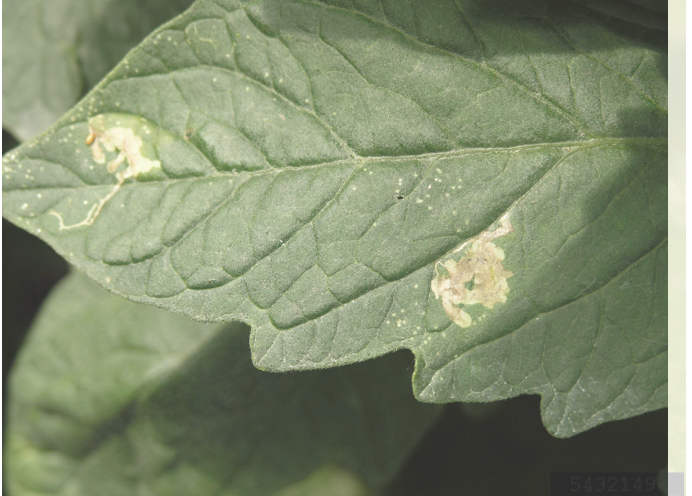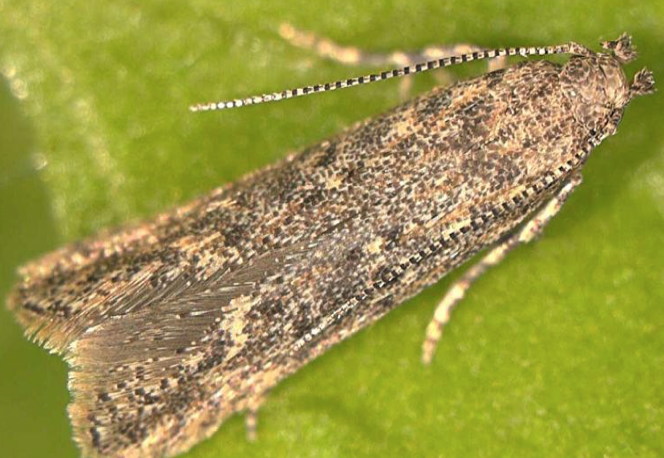Tuta absoluta (tomato leaf miner)
Credit: Biovision-Infonet

(c) Goldlocki, 2005

(c) Marja van der Straten, NVWA Plant Protection Service, Bugwood.org
Tuta absoluta is a new insect pest of tomato plant in sub Saharan Africa. The moth pest originated from Peru and has spread to Europe, Africa and Asia. In Africa, T. absoluta was detected in Tunisia (2009), Ethiopia (2012), Senegal (2013), Sudan (2010) , Tanzania and Kenya (2014) and in Uganda (2015). Although tomato plant is the main host for T. absoluta, the pest also attacks other plants in the Solanacea family including potato, nightshade, eggplant, pepino, tobacco and solanaceous weeds such as Datura.
The life cycle of T. absoluta is completed within 30-35 days. T. absoluta can have 10-12 generations per year. Females can lay up 250-300 eggs on host plants. Eggs are small, cylindrical, creamy-white to yellow and approximately 0.35 mm long. Eggs hatch in 4-6 days after egg laying. The larva is cream-colored with a characteristic dark head. T. absoluta has four larval instars. Pupation may take place in the soil, on the leaf surface or within mines. The adults are small moths with 5-7 mm body length. The adults have thread-like antennae and forewings with grey scales and black spots.
The larvae feed between the leaf layers causing irregular mines. They eventually tunnel into the stems or burrow into the fruits, leaving black frass as it tunnels.
T. absoluta is a very challenging pest to control because of its fast reproductive rate (10 -12 generations per year), short life cycle, nocturnal adults, and concealed larval stage inside the plant parts. It can cause up to 100% loss of tomato fruits if left uncontrolled.
| What to do: Remove alternate host plants such as Datura stramonium, volunteer potato, eggplant or tomato plants. Remove and destroy all infested plants and fruits Practice crop rotation and intercropping Mass trapping of leaf miner by using pheromone traps Bio-pesticides such as Bacillus thuringiensis and neem For more on neem click here Bio-control agents, especially parasitoids For more on parasitoids click here |